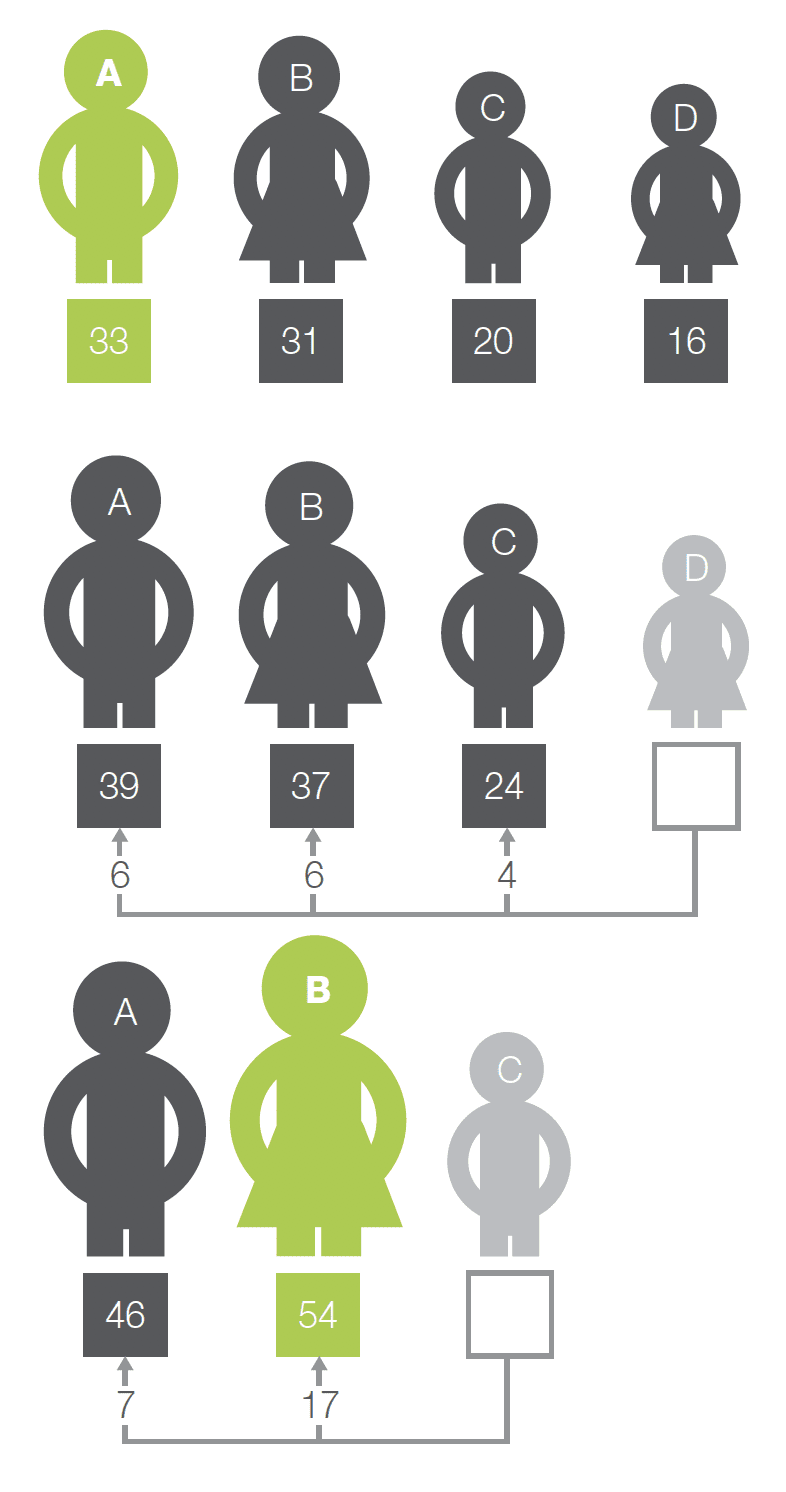AV: Our chance for Fairer Votes
Alternative Vote
The Coalition Government has pledged to hold a referendum on whether to introduce the Alternative Vote (AV) for elections to the House of Commons.
AV represents a very simple change to our current First-Past-the-Post (FPTP) voting system. But that change can have a profound, positive and lasting impact on how we do politics in Britain.
The principle behind AV is a no-brainer: the winner in an election should need the support of a majority of the people. AV makes this happen with ‘preference voting’. All that means for voters is swapping the ‘X’ on the ballot paper for numbers, so voters can rank the candidates in order of preference 1,2,3…
This one straightforward change can ensure all our MPs need a real mandate, while giving voters a stronger say and eliminating forever the need to vote tactically.
How Does AV work?
The Problem
All too often the ‘winners’ in our FPTP elections are opposed by the majority of voters. AV addresses that fundamental problem, ensuring that an election winner has genuine support.
Example

Imagine an election with 100 voters and 4 candidates…
First-Past-the-Post
Candidate ‘A’ has the most votes. Under FPTP he would win, even though the majority of voters haven’t backed him.
Alternative Vote
With AV voters’ ‘first preferences’ are counted as before. As no candidate has 50% support the last placed candidate, ‘D’, is eliminated, and her supporters’ second preferences are transferred to the others.
Still no candidate has 50% support, so candidate ‘C’ drops out and his voters’ second choices are transferred. ‘B’ emerges with majority support. She wins!
Voting Under AV
Voting in an AV election couldn’t be simpler.
The main change is that AV replaces the ‘X’ on our ballot papers with numbers – the ‘preference voting’ element – allowing voters to better reflect their attitudes to each of the candidates.
- Just as before, one candidate is elected for each constituency. The ‘constituency link’ is preserved.
- The look of the ballot paper remains unchanged.
- Under FPTP voters are asked to back just one candidate by marking an ‘X’.
- With AV you can put a ‘1’ by your favourite candidate and a ‘2’ by your second choice, and so on.
- You don’t have to rank any candidate you don’t want to. You’re free to back as many or as few candidates as you like.
- If you just want to back one candidate you can. Just mark an ‘X’ or a ‘1’ by your favourite.
Who uses AV?
AV is already widely used in the UK.
It’s the system of choice for politicians, used to select party leaders, the Commons speaker, indeed any role that requires a winner to have the widest possible support.
Elections with AV are inexpensive to run, easy to understand, and robust. Many organisations in Britain use preferential systems – like AV – that allow voters to rank their favourite candidates to ensure that their elected officers have broad support from their members and are not just the choice of a minority.
AV is used…
- By the Labour Party and Liberal Democrats to select their leaders.
- By MPs to select the Speaker, Select Committee Chairs and other officials.
- By millions of people in unions, and in professional bodies representing teachers, doctors, nurses, engineers and architects.
- In private elections, such as for Chancellor of Oxford University and Rector of Edinburgh University.
- By the Academy Awards for selecting the Oscar for Best Picture.
The Benefits of AV
A profound, positive impact
By making a simple change to what we do on Election Day, we can make a profound, positive impact on how politics works in the UK.
- MPs with a real mandate Today barely 1 in 3 of MPs can claim support from a majority of their voters – a record low. AV would ensure all MPs need to work harder to win and keep our support.
- A Stronger Link AV preserves the constituency link of FPTP and makes it stronger – by forcing MPs to reach out to the majority of voters.
- No more Tactical Voting Supporters of parties large and small can vote sincerely for their preferred party in the knowledge their vote can still help decide the winner.
- Shutting down Extremism AV means divisive or extremist candidates who are unwilling to appeal to a wider electorate have little to no chance of success.
- Positive Politics AV encourages candidates to actively appeal to supporters of other parties, reducing the need for negative campaigning.
- Simplicity AV is easy as 1, 2, 3.
Upgrading our Elections
Our parliament is not a museum.
There has always been evolution in our politics, and today AV is a logical next step.
The secret ballot, votes for women, and votes for working people were all innovations once, and met with opposition. These changes didn’t rip up the rule book, but they were necessary to improve the way we do politics.
With AV we have the chance to make a simple change that preserves and improves on what’s come before.
The Electoral Reform Society is at the forefront of the campaign for change.